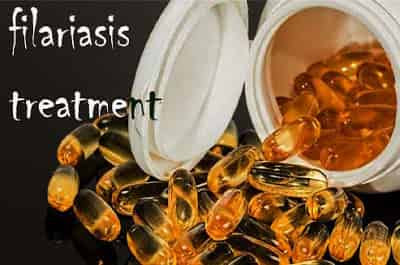In ayurveda, Filariasis is recognized as shlipada implies Elephantiasis (Shli =
elephant + pada = foot). In this particular disease, foot appears like elephant's foot, so called Elephantiasis
also.
Filariasis
is a parasitic infectious disorder triggered by the Nematode Wuchereria
bancrofti and Brugia malayi.
Incubation period - 6 - 12 months.
Signs and Symptoms of Filariasis
High fever and in some cases fever with chills.
Excess sweating.
Headache, Malaise, nausea and vomiting.
Swelling of limbs (legs, arms), genitals
(Orchitis with pain, Labial swelling),
(Orchitis with pain, Labial swelling),
Thickening, hardening, ulcers, abscesses, itching
and rashes of skin.
Joint and muscular pain.
Swelling and red streaks.
Complications associated with Filariasis / Elephantiasis
Inflammation of limbs and genital organs.
Loss / lack of Sexual ability.
Dos and Don’ts in Filarial infection
Keep up proper personal health and hygiene.
Always wear full-length garment to avoid mosquito
biting.
Keep yourself warm and avoid fatty foods.
Raise your feet while sleeping to lessen
swelling.
Stay away from cold water and dairy products.
Always utilize a mosquito net during bed resting.
Consume luke warm drinking water and utilize hot
water for bathing.
Use mosquito repellants like coil, cream or
liquids.
Make use of a spray of insecticides like DDT,
Pyrethrum, Gammexane or kerosine oil and so on to
control the mosquitoes. DDT
powder is best to spray at damp area to get rid of mosquito breeding and avoid
unnecessary water stagnation.
Make a strategic distance from living in damp and
marshier areas.
Prevent entrance of mosquitoes into house for
this purpose always use glass windows.
Household water should be drained properly and
garbage should be dumped in the covered drum.
Allopathic medicine for Filariasis
DIETHYL CARBAMAZINE CITRATE -
(Trade name - HETRAZAN, BENOCIDE, available in
form of tablets and syrup)
In Allopathic medication, only Diethyl
carbamazine citrate named drug is available to treat filariasis
and has an extremely selective effect on microfilariae of
Wuchereria bancrofti and Brugia malayi
from peripheral blood in a week. Microfilariae, Loa-loa and Microfilariae of onchocerca volvulus
are
also susceptible.
Dosage - First day, 1 Mili gram per kilogram of body-weight daily in three divided doses, thereafter
increase gradually 6 Mili gram per kilogram
of body weight daily over two to three
days after meals.
Treat for 21 days without interruption.
Side effects - Nausea, vomiting, giddiness, headache, weakness, loss of appetite, rash and pruritus,
enlargement of
lymph-nodes.
Do not use in pregnancy and renal disorders.
In children and lactating mothers, use with
extreme caution.
Fall in
blood pressure may occur scheduled to mass destruction of microfilariae and
adult worms.
The reaction can be reduced by starting with a low dose and give
corticosteroids or antihistaminics, if necessary.
Herbs used in Filariasis
Bilva - Leaves of bael - Aegle marmelos.
Kulthi - Horse gram - Macrotyloma uniflorum.
Moongh - Green gram - Vigna radiata.
Aparajita - Bluebellvine - Clitoria Ternatea.
Haridra - Turmeric - Curcuma longa.
Manjishtha -
Indian madder - Rubia cordifolia.
Saariva -
Indian Sarsaparilla - Hemidesmus indicus.
Shigru - Drum stick - Moringa oleifera.
Akshadhara / Shakhotaka – Streblus asper.
Karvel - Bitter gourd - Momordica charantia.
Datura - Jimsonweed - Datura stramonium.
Arandi - Castor tree root - Ricinus communis.
Punarnava - Spreading Hogweed - Boerhavia diffusa.
Nirgundi - Five-leaved chaste tree - Vitex negundo.
Saraso - Mustard seed - Brassica nigra.
Pippali - Long pepper - Piper longum.
Chriabilva - Holoptelea integrifolia.
Karanja - Indian beech - Pongamia pinnata.
Bakuchi - Bawchan Seed - Psoralia corylifolia.
Moolaka - Radish - Raphanus sativus.
Vidanga - False black pepper - Embelia ribes.
Daruharidra - Indian barberry - Berberis aristata.
Bhallataka - Marking nut - Semecarpus anacardium.
Agarwood -
Aloewood - Aquilaria malaccensis.
Black wallnut - Juglans nigra / Wallia nigra.
Brahmi -
Waterhyssop - Bacopa monnieri.
Amalaki - Indian gooseberry - Phyllanthus emblica.
Kasamarda -
Negro Coffee - Cassia
occidentalis.
Papaya - Pawpaw / Melon tree - Carica papaya.
Lodhra - Lodh Tree - Symplocos racemosa.
Guduchi - Heart-leaved moonseed -Tinospora
cordifolia.
Ashwagandha - Indian ginseng - Withania somnifera.
Malabar tree nettle - Boehmeria glomerulifera.
Kukshim - Ironweed - Vernonia patula.
Red ucuuba - Virola sebifera.
Sahadevi - Vernonia cinerea.
Dhemna /
Marma - Cissus elongata.
Gotu kola
- Indian pennywort - Centella asiatica.
***********************************************************
Article by Rajesh kumar
***********************************************************
YOU MIGHT ALSO LIKE
HIV Infection / AIDS Treatment at a glance & Ayurvedic Overview
****************************************************************














No comments:
Post a Comment